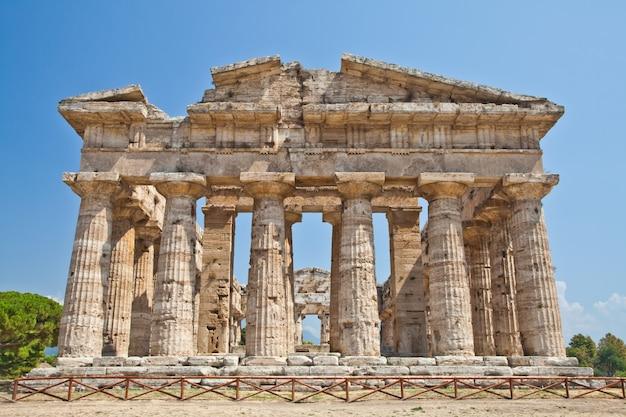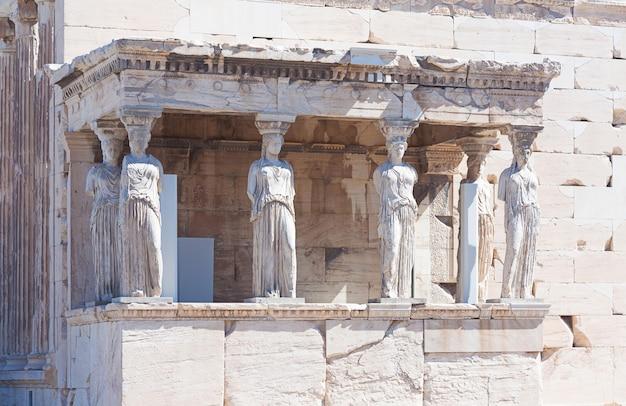The Parthenon, a symbol of ancient Greece’s grandeur, stands proudly atop the Acropolis in Athens. Its magnificence and impeccable architectural features continue to captivate admirers from around the world. As one journeys back in time to the 5th century BCE, the era of Pericles and the Golden Age of Athens, the Parthenon served as a temple dedicated to the goddess Athena. It remains an enduring testament to the ingenuity and skill of the ancient architects. In this blog post, we will delve into the remarkable architectural features of the Parthenon and discover the secrets hidden within its sturdy marble columns and graceful pediments.
But before we embark on our exploration, let’s briefly touch upon the similarities and differences between the Parthenon and another iconic structure, the Pantheon. Additionally, we’ll uncover why the Parthenon holds a special place in the hearts of history enthusiasts and why the Pantheon is considered a vital architectural marvel. So, grab your virtual time machine as we embark on this journey to unravel the wonders of the Parthenon’s architecture.

What are some major architectural features of the Parthenon?
If you’ve ever wanted to step back in time and marvel at one of the most iconic architectural wonders of ancient Greece, then the Parthenon is your ticket to architectural bliss. This majestic temple, located atop the Acropolis in Athens, is a true testament to the skill and artistry of the ancient Greeks. In this section, we will explore some of the major architectural features that make the Parthenon a sight to behold.
The Doric Order: A Classic Beauty
Forget about trendy architectural styles that come and go like the latest fashion trends. The Parthenon is a timeless beauty, and its architectural design is a perfect example of the Doric order. This style is characterized by its sturdy, yet graceful columns that support the weight of the entablature above. Each of the 46 columns stands tall and proud, showcasing the precision and ingenuity of the ancient Greek architects.
Metopes: Like a Graphic Novel in Stone
You know those superhero comic books with epic battles and mythical creatures? Well, the Parthenon’s metopes are like a graphic novel etched in stone. These rectangular panels, located on the frieze, depict scenes from Greek mythology, showcasing the Greeks’ love for storytelling and their awe-inspiring artistic skills. From heroic battles to mythical creatures, these metopes transport you to a world of legends and intrigue.
Pediments: A Glimpse into Greek Mythology
Prepare to have your mind blown as you gaze up at the pediments of the Parthenon. These triangular sections, located at the front and back of the temple, are like a window into Greek mythology. The East pediment depicts the birth of the goddess Athena, emerging fully grown from the head of her father, Zeus. Meanwhile, the West pediment features a mythical contest between Athena and Poseidon for the city of Athens. Talk about high-stakes drama!
The Parthenon Frieze: An Epic Parade
If you thought the Parthenon couldn’t get any more impressive, think again. The frieze that wraps around the top of the temple is like a grand parade that celebrates the greatness of ancient Athens. This intricate sculptural masterpiece depicts a procession of Greek gods, humans, and mythical creatures, engaging in various activities and ceremonies. It’s like a snapshot of ancient Greek life, frozen in time for all to admire.
The Perfect Proportions: Mathematics Meets Beauty
It’s no secret that the Greeks were masters of geometry and mathematics. And the Parthenon is no exception when it comes to mathematical precision. The temple’s architects ingeniously incorporated various techniques to create the perfect illusion of balance and harmony. From the slight outward curve of the columns to the subtle slant of the entablature, every detail was carefully calculated to create a visually stunning masterpiece.
Captivating Capital: Ornate Details
Prepare to be captivated by the intricate details of the Parthenon’s capitals. These decorative elements sit atop each column, adding a touch of elegance and sophistication to the overall design. The acanthus leaves delicately curl and intertwine, creating a feast for the eyes. These impressive capitals are a testament to the Greeks’ keen eye for design and their unwavering dedication to perfection.
The Parthenon is not just a magnificent piece of architecture; it’s a testament to the brilliance and creativity of the ancient Greeks. From the sturdy Doric order to the captivating metopes and pediments, every architectural feature tells a story and transports us to a world of gods, heroes, and mythical creatures. So, if you ever find yourself in Athens, make sure to pay a visit to the Parthenon. Trust me, it’s a once-in-a-lifetime experience that will leave you in awe of the magnificent architectural wonders of ancient Greece.

FAQ: What are some major architectural features of the Parthenon?
Welcome to our comprehensive FAQ-style guide to the mesmerizing architectural features of the Parthenon! Step right up and prepare to be awestruck by the stunning craftsmanship and historical significance of this ancient beauty. Whether you’re an architectural enthusiast or simply curious about the wonders of the world, we’ve got you covered. So, let’s embark on a journey through time and uncover the remarkable elements that make the Parthenon truly one of a kind!
What is Roman painting
Ah, Roman painting! A delightful blend of artistry and storytelling. It’s like a vivid window into the past, allowing us to observe the beauty and intricacies of ancient Roman life. From vibrant frescoes adorning walls to captivating mosaics underfoot, Roman painting was a feast for the eyes. So, don your virtual toga and prepare to be immersed in the artistic wonders of the Roman Empire!
What is the third style of Roman painting
Ah, the whimsical third style of Roman painting! Picture this: delicate brushstrokes creating intricate architectural designs, with a touch of added fantasy. It’s like stepping into a dream world where walls transform into illusory scenes. This style, popular in the late 1st century BCE, embraced a more ethereal and poetic approach. So, if you’re ready to journey through fantastical realms, let’s delve into the captivating realm of the third style!
What are the similarities and differences between the Parthenon and Pantheon
The Parthenon and Pantheon – two towering marvels that leave us in awe. While both showcase architectural brilliance, they differ in several fascinating ways. The Parthenon, an imposing temple dedicated to Athena, boasts classical Greek design elements, while the Pantheon, a former temple turned church, flaunts distinctive Roman influences. Join us as we unravel the similarities and differences between these iconic architectural gems!
What is special about the building the Parthenon
Hold onto your hats, folks, because we’re about to reveal the secrets that make the Parthenon truly extraordinary! This ancient masterpiece, perched majestically atop the Acropolis, boasts an exquisite combination of design, engineering, and historical significance. From its precise measurements to its captivating sculptures, every aspect of the Parthenon oozes magnificence. So, get ready to be wowed as we unravel the special features that make the Parthenon a true wonder of the world!
Why is the Pantheon so important
Prepare to be enlightened about the awe-inspiring significance of the Pantheon! This architectural marvel, commissioned by Emperor Hadrian, serves as a testament to Roman engineering prowess and divine worship. Its unrivaled dome, a feat of ancient engineering, continues to inspire architects to this day. Learn more about the historical and cultural importance of the Pantheon as we delve into its captivating allure!
What are some major architectural features of the Parthenon
Ah, the grandeur of the Parthenon! From the towering columns to the intricate friezes, this temple boasts an array of architectural features that will make your jaw drop. Let’s take a closer look at some of the Parthenon’s most noteworthy elements:
1. Pediments: Grecian Glimpses
Marvel at the triangular pediments, both east and west, depicting mythological scenes and mortal interactions. These sculptural wonders breathe life into the Parthenon’s facade, transporting us to the realms of ancient gods and heroes.
2. Doric Columns: Oh-So-Stately!
Prepare to be mesmerized by the Doric columns, standing tall and proud. These sturdy pillars, adorned with fluting and topped with intricate capitals, are the epitome of Greek architectural elegance. Get ready to channel your inner philosopher as you ponder the beauty of symmetry.
3. Metopes: Capturing Moments
Step closer and witness the intricate metopes, carved in bas-relief. These rectangular panels portray legendary battles, from centaurs clashing with Lapiths to gods combing through a resinous tale. These artistic marvels offer glimpses into a world long past, igniting our imagination.
4. Frieze: Ornate Spectacle
Last, but certainly not least, feast your eyes on the majestic frieze. This continuous band, encircling the temple’s inner chamber, showcases a procession of figures in breathtaking detail. As you trace the intricate contours, stories from Athens’ past come alive before your very eyes.
So there you have it – a glimpse into the architectural wonders that define the Parthenon. Each element weaves together a rich tapestry of history, beauty, and human ingenuity. Join us on this journey through time and marvel at the creative genius of ancient Greece!
We hope this FAQ-style guide has quenched your thirst for knowledge about the Parthenon’s architectural features. From the grand columns to the enchanting frieze, each aspect of this ancient wonder unravels a story that encapsulates the essence of Greece’s golden age. So, whether you’re planning a future visit or simply seeking to expand your understanding of architectural marvels, the Parthenon stands ready to captivate your imagination.
